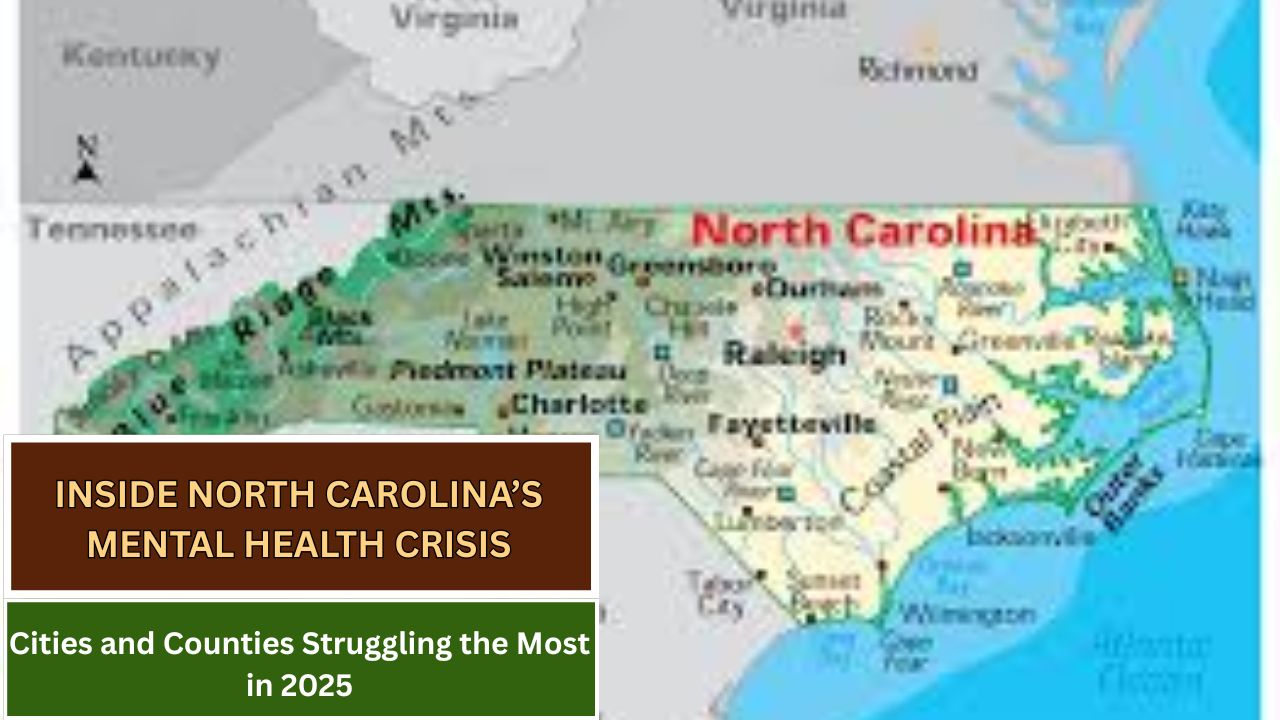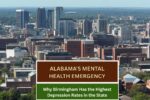A rising tide of mental health issues is spreading across North Carolina, and some cities and counties are showing troubling signs of being in crisis. Among them, Rocky Mount stands out, recently dubbed the “most miserable city” in the state by Travel Alot.
Located at the junction of Edgecombe and Nash counties, Rocky Mount has seen a 6% population decline since 2010, an unemployment rate 65% above the national average, and a poverty rate of 22.4%, all of which compound the emotional and financial stress residents experience. The crime rate is 43% higher than the national average, with an especially high murder rate.
These social determinants—poverty, crime, and unemployment—are directly linked to increased rates of depression and other mental health issues, according to the CDC’s Social Determinants of Health Framework.
A Broader Trend: Mental Health Decline Across North Carolina
But Rocky Mount isn’t alone in its struggles.
A 2024 report by America’s Health Rankings found that 23.1% of North Carolina adults have been diagnosed with depression, placing the state 31st in the U.S. for mental well-being.
The situation appears to be worsening. According to a report from The Charlotte Post, mental distress among adults in NC rose by 24% between 2018 and 2022.
Robeson County: North Carolina’s Most Unhealthy Community?
In Robeson County, home to the city of Lumberton, the health outcomes are among the worst in the state. As per County Health Rankings, 32% of adults report poor or fair health, and life expectancy is just 72 years—six years lower than the state average.
Perhaps most alarming, Robeson holds the highest rate of fatal opioid overdoses in the state, signaling a deep connection between substance abuse and mental health struggles. The North Carolina Department of Health and Human Services (NCDHHS) tracks these overdose statistics in real time and confirms the ongoing crisis.
Scotland County: Child Poverty and Unemployment Paint a Bleak Picture
Scotland County also ranks among the most distressed areas in the state. The unemployment rate sits at 5.6%, the median household income is $39,866, and 46% of children live below the poverty line, per U.S. Census Bureau.
Research from the National Institute of Mental Health shows that childhood poverty is a strong predictor of long-term mental health issues, making Scotland County a high-risk region for future generations.
Resources for Those in Crisis
The mental health crisis across North Carolina has prompted local and state authorities to expand available resources. Among them:
- SAMHSA National Helpline: 1-800-662-HELP (4357) – free, confidential help 24/7.
- NC 211 – a comprehensive guide to local services including mental health support.
- CredibleMind NC – a digital mental health platform providing assessments and self-care tools.
- NCDHHS Mental Health Services – access to community mental health and crisis care.
The Road Ahead
The correlation between economic hardship and mental illness is well-documented, and these North Carolina regions provide vivid case studies. From rising depression rates and overdose deaths to high child poverty and violent crime, the symptoms are clear—and urgent.
Local leaders, health officials, and communities must collaborate to address not only the clinical aspects of mental health but also the underlying socioeconomic causes.
The spotlight on Rocky Mount and surrounding counties may be harsh, but it’s also necessary. With awareness, investment, and compassion, it’s possible to turn even the most “miserable” places into stories of resilience.
This article has been carefully fact-checked by our editorial team to ensure accuracy and eliminate any misleading information. We are committed to maintaining the highest standards of integrity in our content.

Outside of work, he enjoys playing chess, following cricket, and writing short stories. His commitment to integrity and in-depth analysis strengthens OTE News’ mission of providing trustworthy journalism.




